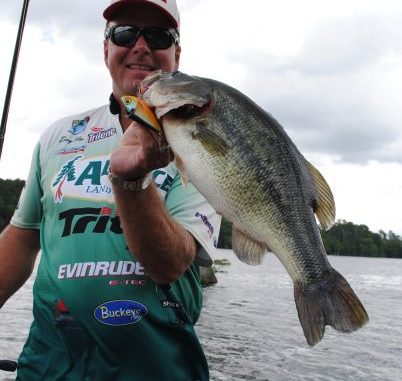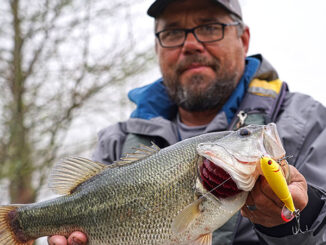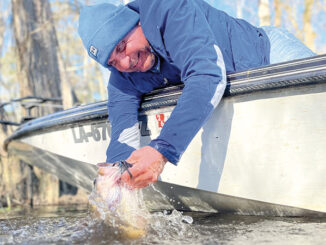
Three bass pros share their tips for creek selection
Bass fishermen know that fall means going back in creeks to find fish that are mirroring the movements of baitfish. So how is it that on most reservoirs in the south, one or two creeks stand out in October and November as the places to be? Is there something about those creeks that make them the places to become Autumn?
South Carolina’s Davy Hite, a Bassmasters Classic and FLW Tour Championships winner and two-time BASS Angler of the Year, said certain creeks hold more bait every fall than others, and his opinion was those creeks were the ones that, for whatever reasons, supported the most plankton — the base of the bass food chain.
“I’ve never been able to find a reason that bait goes back into certain creeks — but it does — other than maybe those creeks are the ones that have the most plankton in the water,” Hite said. “The best creeks are definitely the ones that hold the most bait, but they aren’t all the same. Some of them are live creeks, and some of them don’t have a constant flow of freshwater coming in.
“Years ago, when I’d go into a creek and see a ton of bait, I’d stray away from that creek, because I was worried about the competition from the bait. If there was a million shad in that creek, why would they hit my crankbait?” he asked. “But I learned, those are the creeks to fish because so many predators go up there with the bait.”
North Carolina’s Tracy Adams, who has qualified for two Bassmasters Classics and six FLW Tour Championships, typically looks to the upper end of a reservoir for the top fall creek, and he thinks the tendency for a lake to have one super creek is related to water clarity.
“The really good fall creeks are mostly all going to be toward the upper end of a lake, because you have bait and bass that will move to the upper end in the fall, and they’ll go in a creek up there,” Adams said. “I don’t think it works as well on really clear lakes, because fish are more likely to go in a creek that’s got a little dingy water.
“I do think your better fall creeks will have some rock — some rocky corners and points. The channel banks are probably going to be better, with laydowns and shallow, shoreline cover.”
Possibly the king of fall fishing is David Fritts, the North Carolina crankbait wizard who has won more than $2 million fishing the FLW and BASS tournament trails, including the 1993 Bassmasters Classic and FLW Tour Championship. Of his dozen biggest, national tournament wins, five were in September, October or November.
He believes that current flow is what sets a great fall creek apart from the rest of the tributaries on a reservoir, and he said that fishermen with a good map can often see enough characteristics in a creek to point them in that direction.
“Usually, when you come to fish in the fall, if you’re familiar with a lake, if you’ve fished it quite often, you know which creeks will hold more bass,” Fritts said. “To me, the more current flow a creek has, the more shad will go in it in the fall, and the more bass will go in it.
“One thing I like to do is see how deep the creek channel is” compared to the flats on either side, he said. “If I’m in a creek mouth and the channel is 10 feet deep, that’s going to be a pretty good fall creek. If the creek channel is 5 feet deep, it will be okay, but not as good as a creek with a 10-foot channel.”
Behind that belief is the knowledge that bass will get on steeper drops in the fall than they used during the summer, so a creek channel that breaks 8 or 10 feet from the flat to the bottom will hold more fish than one that only breaks 2 or 3 feet.
“One more thing I look for, sometimes a map will show you: how many bends and turns a creek channel has. Usually, the more bends and turns a channel has, the better that creek will be in the fall, because it takes a lot of flow — and hard flow — to make those twists and turns in the channel.”


